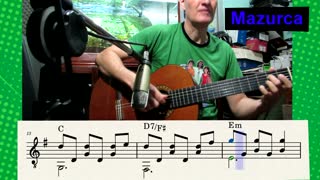Premium Only Content
![Beethoven 9th Symphony in D Minor Op125 , 1st Mov - [1st D Trumpet Part] (sheet music)](https://1a-1791.com/video/s8/1/g/V/g/4/gVg4e.qR4e-small-Beethoven-9th-Symphony-in-D.jpg)
Beethoven 9th Symphony in D Minor Op125 , 1st Mov - [1st D Trumpet Part] (sheet music)
D trumpet part of 9th Symphony of Ludwig van Beethoven
Performer Pages Royal Concertgebouw Orchestra (orchestra)
Performers Otto Klemperer (conductor)
Publisher Info. Amsterdam: Concertgebouw Orchestra, 1956.
Misc. Notes Recorded performance: Amsterdam, 17 May 1956
(public domain)
PLAYLIST: https://www.youtube.com/playlist?list=PLkml7ZJ51KiwWwjT278mSBWHZC2Se3q_V
Uma excelente maneira de estudar e aprimorar sua prática orquestral é acompanhar os grandes classicos com a parte do seu instrumento. Contar os compassos de pausa, analisar a interpretação, perceber a dinâmica e etc., irá proporcionar um entendimento cada vez melhor de todos os aspectos de se tocar em uma orquestra.
An excellent way to study and improve your orchestral practice is to accompany the great classics with your instrument part. Counting the pause measures, analyzing the interpretation, understanding the dynamics, etc., will provide an ever better understanding of all aspects of playing in an orchestra.
Symphony No. 9 in D Minor, Op. 125, byname the Choral Symphony, orchestral work in four movements by Ludwig van Beethoven, remarkable in its day not only for its grandness of scale but especially for its final movement, which includes a full chorus and vocal soloists who sing a setting of Friedrich Schiller’s poem “An die Freude” (“Ode to Joy”). The work was Beethoven’s final complete symphony, and it represents an important stylistic bridge between the Classical and Romantic periods of Western music history. Symphony No. 9 premiered on May 7, 1824, in Vienna, to an overwhelmingly enthusiastic audience, and it is widely viewed as Beethoven’s greatest composition.
Symphony No. 9 in D Minor, Op. 125, byname the Choral Symphony, orchestral work in four movements by Ludwig van Beethoven, remarkable in its day not only for its grandness of scale but especially for its final movement, which includes a full chorus and vocal soloists who sing a setting of Friedrich Schiller’s poem “An die Freude” (“Ode to Joy”). The work was Beethoven’s final complete symphony, and it represents an important stylistic bridge between the Classical and Romantic periods of Western music history. Symphony No. 9 premiered on May 7, 1824, in Vienna, to an overwhelmingly enthusiastic audience, and it is widely viewed as Beethoven’s greatest composition.
#trumpetsheetmusic #beethovensymphony #classicmusic
-
 2:57
2:57
The channel for Trumpeters of all levels
1 year ago $0.03 earnedGuia Prático de Aquecimento para Instrumentos de Metais de John B. Gage - 12
601 -
 1:17
1:17
dubettoni228
2 years ago $0.17 earnedMazurca (sheet music)
1382 -
 3:18
3:18
Easy Piano Tutorials
2 years ago5th Symphony in C Minor - Ludwig Van Beethoven | Easy Piano Tutorial
47 -
 6:08:00
6:08:00
JdaDelete
1 day ago $5.13 earnedHalo MCC with the Rumble Spartans 💥
46.6K7 -
 3:52:22
3:52:22
Edge of Wonder
11 hours agoChristmas Mandela Effects, UFO Drone Updates & Holiday Government Shake-Ups
40.5K13 -
 1:37:36
1:37:36
Mally_Mouse
9 hours agoLet's Play!! -- Friends Friday!
44.4K1 -
 57:45
57:45
LFA TV
1 day agoObama’s Fake World Comes Crashing Down | Trumpet Daily 12.20.24 7PM EST
40.3K17 -
 1:27:17
1:27:17
2 MIKES LIVE
8 hours ago2 MIKES LIVE #158 Government Shutdown Looms and Games!
34.8K10 -
 1:07:34
1:07:34
The Big Mig™
13 hours agoVeteran, Patriot, Leader, Author Allen West joins The Big Mig Show
32.2K8 -
 1:06:47
1:06:47
The Amber May Show
1 day ago $1.33 earnedBloated CR Failed | What Did The View Say Now? | Who Kept Their Job At ABC| Isaac Hayes
19.5K3